Farha Designs: Incorporating traditional Bedouin weaving into modern fashion
Huda Dabeet, Jordan News
last updated: Sep 15,2021

AMMAN — Vintage, creative, and unique, fitting words that come to mind when thinking about the millennia-old traditional Bedouin weaving technique known as Al-Sadu, and transforming this traditional art form to fit modern aesthetics and designs and textile technology.
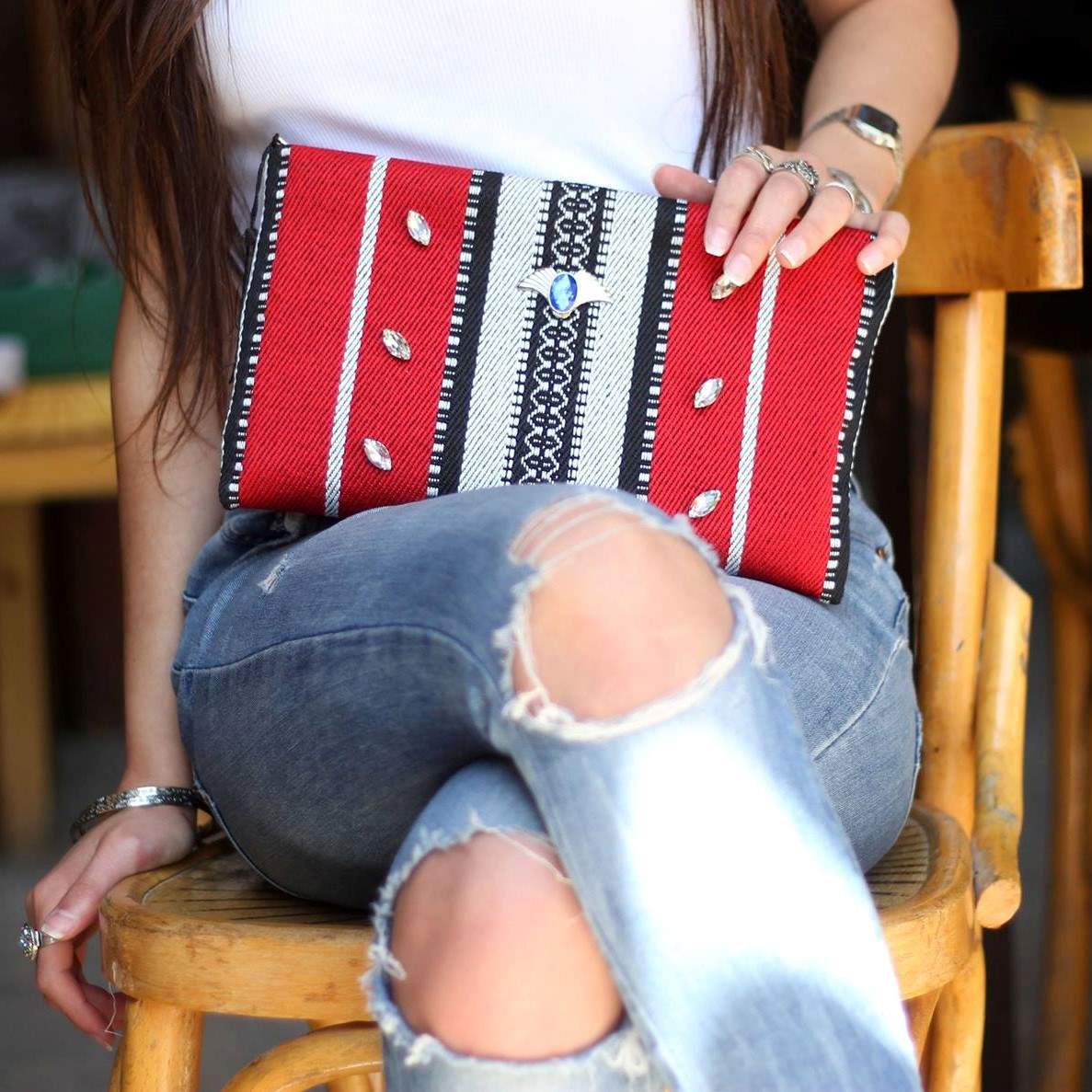
Vintage, creative, and unique designs inspired by millennia-old traditional Bedouin weaving technique known as Al-Sadu, and adapted to modern fashion needs by Farah Designs. (pictures handout by Farah Designs)
Farha Designs is a Jordanian project that specialized in the creation of new and original fashion designs that emphasis the empowerment of local artisans and business owners, while ensuring high quality and consistent production.
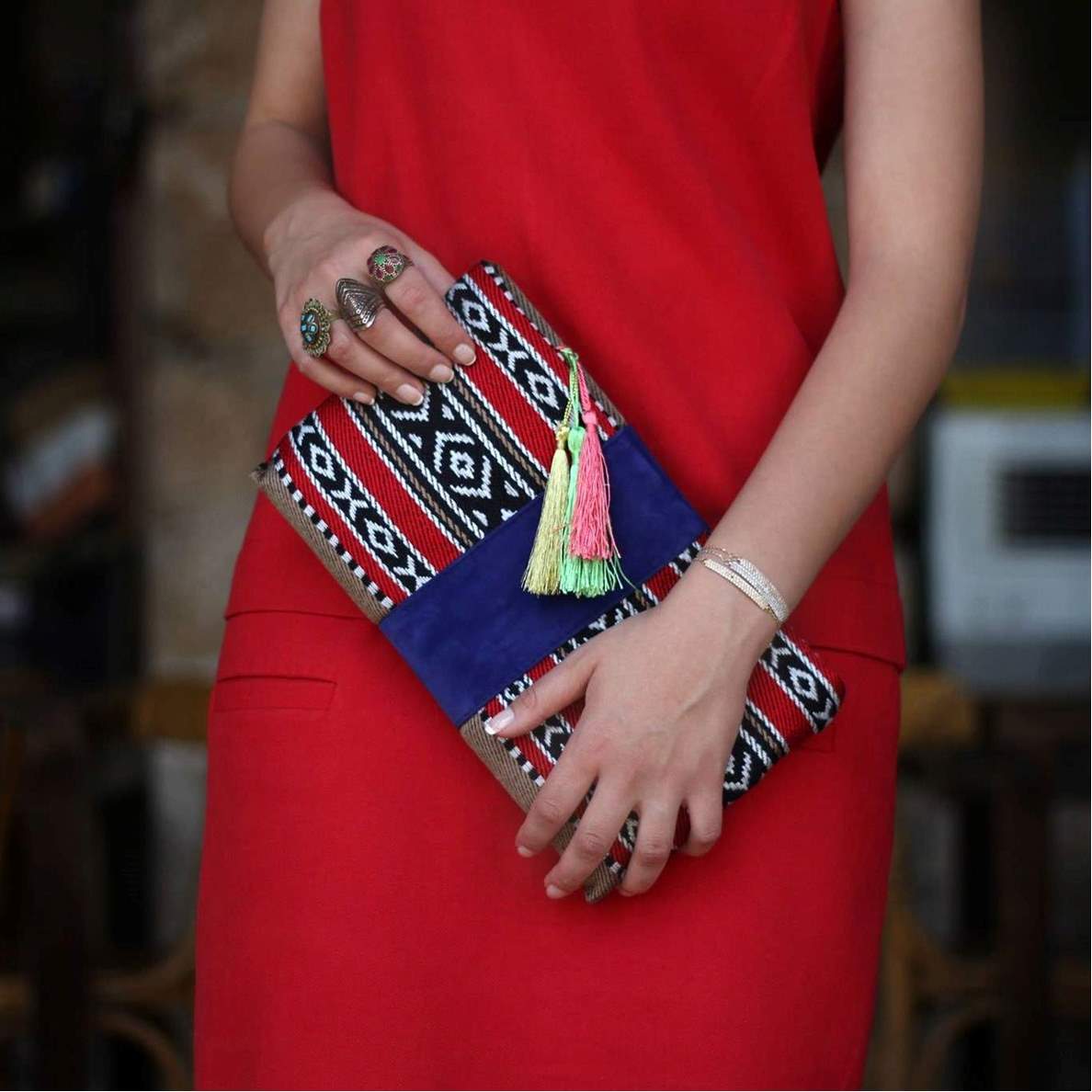
Vintage, creative, and unique designs inspired by millennia-old traditional Bedouin weaving technique known as Al-Sadu, and adapted to modern fashion needs by Farah Designs. (pictures handout by Farah Designs)
“I've always enjoyed design, and my interest in fashion design began when I was a teenager, I started recycling old clothes,” Farah Nassif, designer and proprietor of Farha Designs, told Jordan News. “From there I began developing small pieces and partnering with local artisans until the idea became a manufacturing effort.”
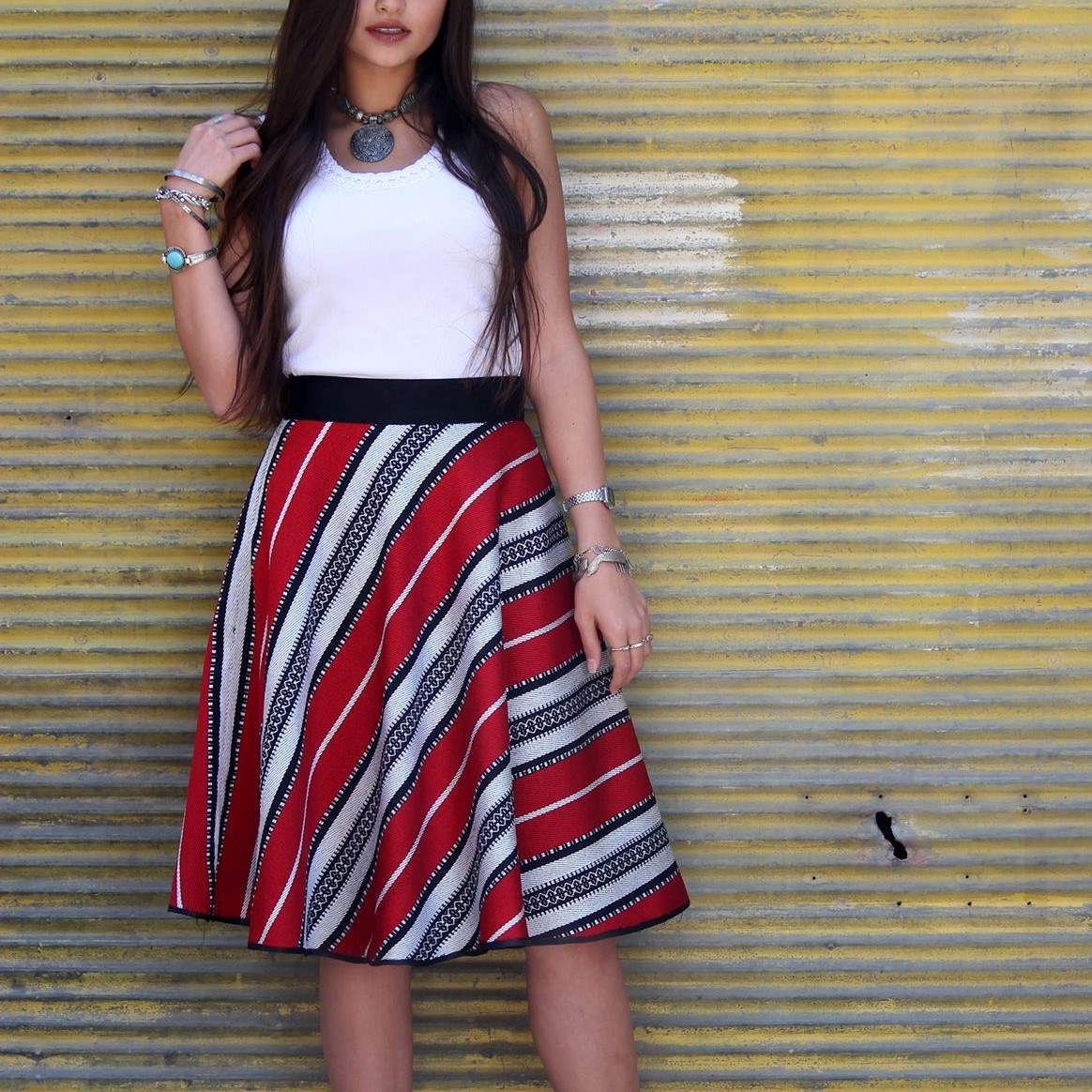
Vintage, creative, and unique designs inspired by millennia-old traditional Bedouin weaving technique known as Al-Sadu, and adapted to modern fashion needs by Farah Designs. (pictures handout by Farah Designs)
She said that while looking for a name for her project she came across the word ‘Farha’ and decided it was ideal because ‘Farha’ in Arabic means ‘Joy’. Farah added that the name had a “funny effect” because it was an old name that was no longer used, and it rhymed with old Arabic names like Wadha and Sabha.
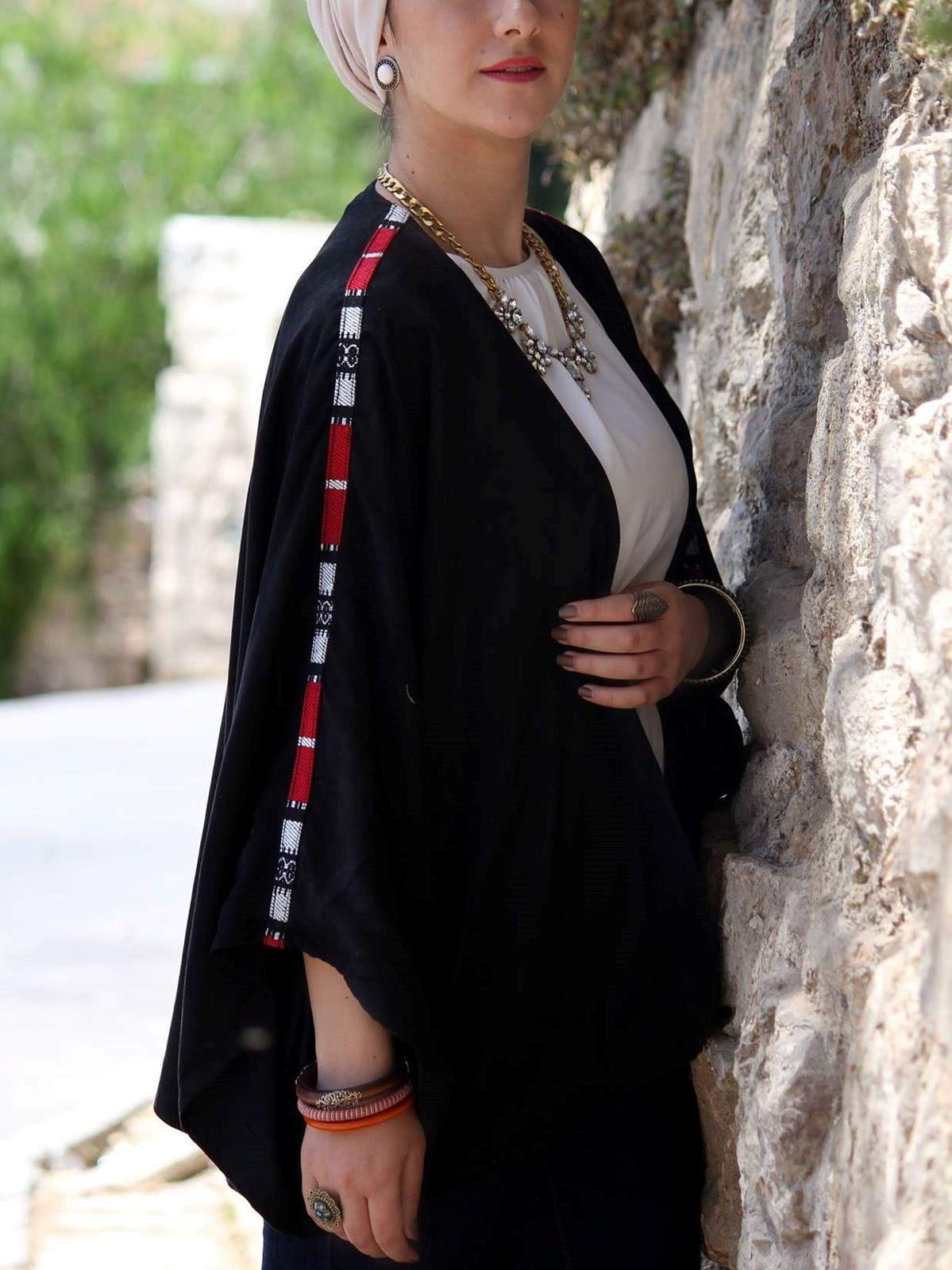
Vintage, creative, and unique designs inspired by millennia-old traditional Bedouin weaving technique known as Al-Sadu, and adapted to modern fashion needs by Farah Designs. (pictures handout by Farah Designs)
“My friend used to call me Farha, and Joy was something I always tried to spread through my project, whether that was through my designs or the environment around the project that affected customers and employees,” Nassif said. The old name also reflects a heritage aspect which she always strives to integrate into her designs.
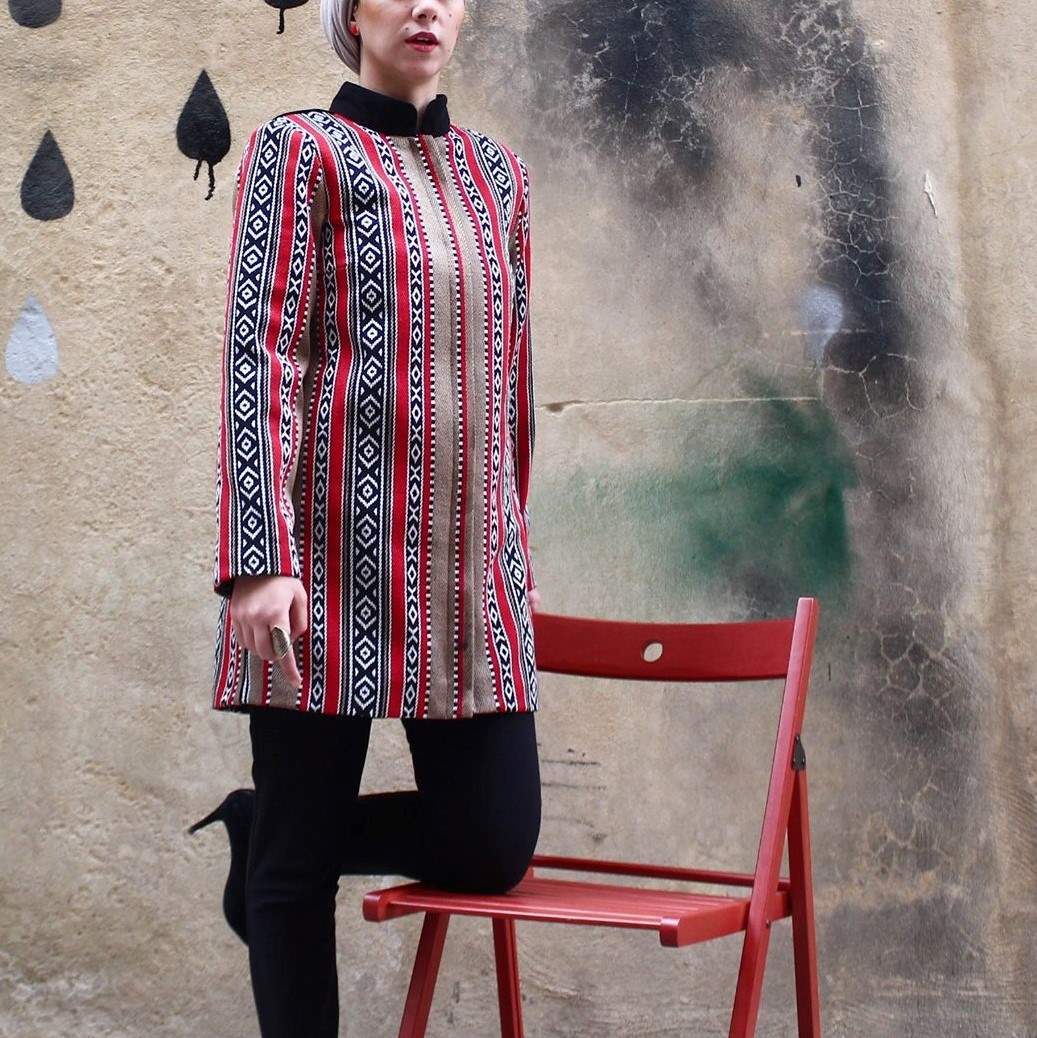
Vintage, creative, and unique designs inspired by millennia-old traditional Bedouin weaving technique known as Al-Sadu, and adapted to modern fashion needs by Farah Designs. (pictures handout by Farah Designs)
Nassif said that she is building on the foundations laid by her ancestors. “I choose to combine something from the past, the most important of which is the aesthetic of the handicraft and folklore legacy, with endless possibilities for repurposing and merging it with fashion and other aspects of our lives,” she said.
The designs reflect Nassif’s very own perspective, and while the heritage element is present, it is not reproduced in its original form; rather, the design is intended to incorporate and expand on the original form.
“I owe it to my parents who have given me and my siblings a great deal of freedom to explore ourselves, and our environment since we were little,” the designer said.
The project started out as a hobby in 2013 and 2016, but Nassif dedicated herself fully to her project “While it was not easy, the happiness I felt within for chasing my ambition was well worth it and made me overcome the most difficult times and be grateful for every failure that contributed to future successes,” Nassif said.
Farha Designs collaborates with local workshops specializing in the manufacture of clothing, bags, and embroidery.
Nassif said that from a simply idea, to creating something with all of its details, is wonderful to witness. It is similarly pleasing to see these ideas come to life and see people connect with them and share stories and details of their lives around these ideas.
“Once I was sitting in a coffeehouse and I noticed a girl wearing one of my designs (handbag), and she had matched it with the rest of her outfit in a way I very much admired,” Nassif said. She said that she was hiding behind her drawings and designs at the time, and hadn’t yet had an online presence or social media platform for her designs.
“It appears that I was looking to long at the girl and what she was wearing until she approached me and asked whether we knew each other. I was delighted she came over, and I was even happier that I told her the purse was my design.” Nassif said.
Fashion-forward and trendsetter-designed prints and patterns inspired by Bedouin culture set any piece of clothing or accessory apart from the rest. Farha Designs is built on the value of shaping culture. As a result of the designer efforts, combining her flair for design and the expertise of local artisans, it has broadened concept of sustainable clothing and served to empower local communities.
Her greatest collection, she said, the ‘Beit Sha’ar’ 2016 collection, was her first since deciding to pursue a career in fashion design, and it featured a variety of types of clothing and bag designs.
Nassif said that the Sadu fabric used in the ‘Beit Sha’ar’ collection is typical of that used in local Arab furniture and Bedouin tents. She had previously designed and manufactured some pieces from this material, but in this particular collection, she wanted to use it in a more modern way, by using a variety of techniques to create a complete collection with a single soul.
Sadu, or Al Sadu, is Bedouin needlework made out of geometrical shapes weaved by hand. “This collection received a lot of positive feedback,” Nassif said. “After being restricted to furniture, it paved the way for numerous designers to dare to use Sadu in the apparel industry.”
The designer discussed that she enjoys fashion, but hates limits, which is why despite having a solid understanding of what's going on in the industry each season, she refuses to follow trends at all times.
“I take this very personally, I don't believe anyone has the right to tell someone what they should or should not wear, or to criticize their apparel only because markets are not teeming with similar designs at the time,” Nassif said, adding that she has been wearing her grandmother's dress every summer for years now.
She described herself as a classicist who values the material presence of objects, such as mood boards, a collage of images and objects that highlights a specific visual style used in the fashion industry, as well as sketches and sewing patterns.
“This does not, however, preclude using some design programs for specific purposes. I sometimes make two versions of the mood board, one physical and one digital, so that I can add music and videos to the digital one.” Nassif said of her creative process.
Nassif finds inspiration in the street, in the art that is embedded in the intricacies of surroundings, and in the interactions of passers-by with their surroundings, such as a broken window in an old building. Such art, she said, can be seen by passers-by, and each person has a different point of view and perspective on them.
“For me, the shards of glass and scratched window represent an art piece, and the most beautiful part about it is that it was not created for the purpose of art or design, and its creator is unknown,” Nassif said.
She said that people can support any local business by understanding it. “It is impossible to provide support without first appreciating the significance of the support and its economic and social impact,” Nassif said. “Therefore understanding what this support comprises is vital.”
Raising awareness, buying local products, participating in promoting these products, providing input to project owners to help them improve their products, and investing in such projects, are all examples of ways to support local businesses.
The designer has turned her small project into a remarkable brand, but she started her project with a small budget, and she was afraid of making any mistakes.
“I was fearful of making mistakes because I might not be able to afford the luxury of making mistakes, as they might send me back to square one. While I did make some mistakes, I found solutions that kept me on track.” Nassif said.
She went on to say that social media encourages irresponsible shopping, particularly in the fashion industry. “It persuades you that you always need more and it makes the purchasing process as simple as pressing a button. Regrettably, the majority of us are unaware of the full cost of a simple click,” Nassif said.
“While I cannot deny that social media was a significant (if not the most significant) factor in my existence as a designer, as well as the existence of many other designers and entrepreneurs today, it also has the ability to mess with our heads and make us feel dissatisfied with ourselves, our lives, and our possessions,” Nassif cautioned.
The shortage of resources and the limited range of equipment available are two of the project's limitations, something it shares with the majority of comparable firms in Jordan. Farha designs, however, focuses on creatively utilizing available materials and resources, believing in the ability of local designers is a key component in achieving this.
Farha Designs is constantly forming partnerships that promote the transfer of knowhow and expertise, culminating in unique designs that harmoniously reflect the essence and distinctiveness of Jordan's indigenous designers.
The Farha Designs team is made up many creative people, despite the fact that the workshop itself is just three people, but they continue to collaborate with local craftsmen and workshops. Moreover, they have recently started training and employing female workers to work from their homes.
“I am currently the only member of the team working on designs, although I have previously cooperated with a number of local designers and artists on joint collections and designs, and I intend to do so again in the future,” Nassif concluded.
Read more Lifestyle

